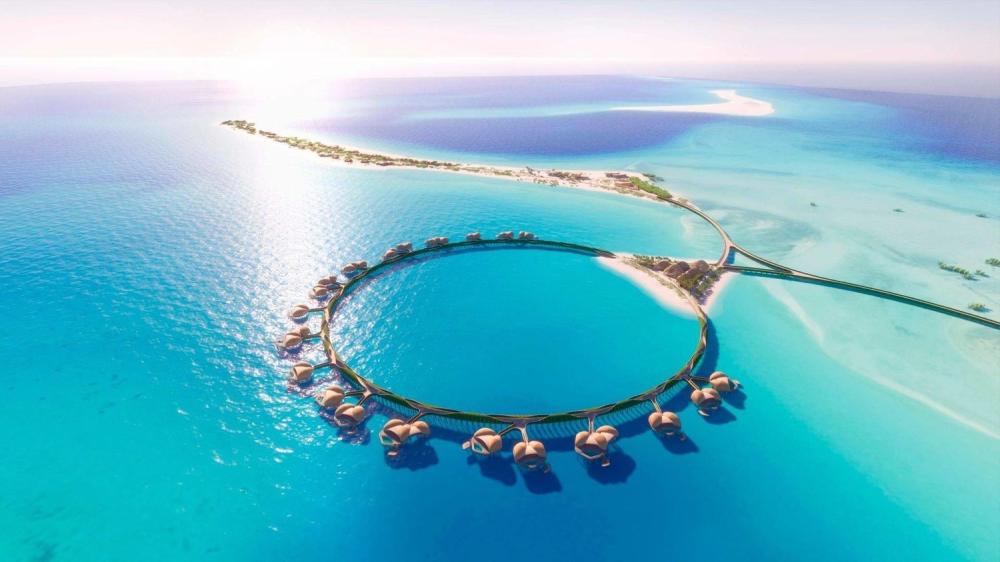#### Geographical location and strategic importance
The Red Sea is located between the Arabian Peninsula and northeastern Africa, and extends from the Gulf of Suez in the north to the Bab el-Mandeb Strait in the south. This sea is considered one of the most important waterways in the world, as it connects the Mediterranean Sea and the Indian Ocean via the Suez Canal. This strategic importance makes it a major hub for global maritime trade.
#### Geology and formation
The formation of the Red Sea dates back about 30 million years ago during the Eocene epoch when the African and Arabian tectonic plates began to separate. The Red Sea is characterized by a large crack at its bottom known as the “Red Sea Rift,” which continues to gradually expand. This fault is the cause of seismic and thermal activity in the area, which leads to the presence of underwater thermal springs and coral reefs formed as a result of these geological activities.
#### Marine environments and biodiversity
The Red Sea is considered one of the most biodiverse seas in the world. It contains a unique ecosystem that includes coral reefs, which are among the healthiest and most sustainable in the world. These reefs contain more than 1,200 species of fish, including endemic species found nowhere else. In addition, the Red Sea is home to a variety of invertebrates, seabirds and mammals such as dolphins and whales.
#### Coral reefs
Coral reefs in the Red Sea play a vital role in the marine ecosystem. It provides natural habitats for fish and invertebrates and protects coastlines from erosion through breaking waves. It also contributes to the ecotourism industry by attracting divers and tourists from all over the world to witness its natural beauty.
#### Economic importance
The Red Sea represents a vital economic artery for many of the countries bordering it, including Egypt, Saudi Arabia, Sudan, and Yemen. These countries depend on the Red Sea for trade, fishing, and tourism. The Suez Canal is considered one of the most important shipping lanes in the world, as a large proportion of global trade passes through it, which enhances the economic importance of the Red Sea.
#### Environmental challenges
Despite its environmental and economic importance, the Red Sea faces multiple environmental challenges, including pollution from shipping and coastal industries, overfishing, and the destruction of coral reefs due to unsustainable tourism activities. Climate change also poses an additional threat as rising temperatures cause coral reefs to bleach and die.
#### Protection and conservation efforts
Protecting the Red Sea requires integrated efforts from the countries bordering it, international organizations, and local communities. These efforts include establishing marine reserves, implementing environmentally friendly policies, and promoting environmental awareness among local residents and tourists. For example, Egypt has established several marine reserves along its coast in the Red Sea to protect biodiversity and coral reefs.
### Conclusion
The Red Sea is an environmental and economic treasure distinguished by its unique biodiversity and global strategic importance. However, this natural wealth faces serious environmental challenges that require joint efforts to protect and preserve it. Through international and local cooperation, the sustainability of this vital ecosystem can be ensured for future generations, ensuring that humanity continues to benefit from its unique economic and environmental benefits.

